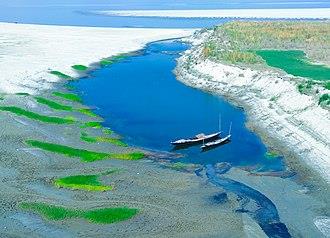Bangladesh, a small country in South Asia, is home to some of the most beautiful rivers in the world. Three of the most important rivers in Bangladesh are the Padma, Meghna, and Jamuna. All three rivers have different sources, different destinations, and different characteristics. When it comes to the geography of Bangladesh, rivers play an important role in the country's economic and cultural life. The Padma, Meghna, and Jamuna rivers of Bangladesh are some of the most significant rivers in the South Asian nation.
The Padma River, also known as the Ganges, is the most important river in Bangladesh and is the longest river in the country with a length of about 585 miles. It is approximately 750 km in length, and it originates in the Himalayas in India and flows south for about 500 km before it enters Bangladesh. It then flows for another 250 km before joining the Meghna River, eventually reaching the Bay of Bengal. The Padma River is considered sacred in both India and Bangladesh and is used for irrigation, navigation, and other purposes.
The Meghna River is the second-longest river in Bangladesh and is the most significant. It is also known as the Brahmaputra River and originates from the Himalayas. It originates in the Himalayas in India and flows south for about 600 km before it enters Bangladesh. It then flows for around 200 km before joining the Padma River. It also flows through the northern part of the country and is known for being a very important outlet for trade, transportation, and commerce.
The Jamuna River is the third-longest river in Bangladesh with a length of about 200 miles. It originates in the Himalayas in India and flows south for about 700 km before it enters Bangladesh. It then flows for another 200 km before joining the Padma River. The Jamuna River is the most important river in Central Bangladesh and is used for irrigation, transportation, and electricity production. It is an important source of irrigation and fish production.
The
Padma, Meghna, and Jamuna rivers are important for Bangladesh because of their significance to the agricultural and economic sectors, as well as their connection to the Indian rivers. The rivers provide irrigation, transportation, and commerce, which all help to support the country's economy. The three rivers also provide important resources for the people of Bangladesh, such as fish, drinking water, and transportation for goods.

All three of these rivers are related to the Indian rivers of the Ganges, Brahmaputra, and Teesta. The Padma River is the main river of Bangladesh and is the largest river in the country. It is a tributary of the Ganges River in India. The Meghna River is the second largest river in Bangladesh, and it is a tributary of the Brahmaputra River in India. The Jamuna River is the third largest river in Bangladesh and is a tributary of the Teesta River in India.
These three rivers of Bangladesh are related to the Indian rivers in some ways. The Padma, Meghna, and Jamuna Rivers all originate in India, before flowing through Bangladesh and into the Bay of Bengal. The Brahmaputra River, which is the source of the Jamuna River, is also the source of the Ganges River in India. In addition, the Padma, Meghna, and Jamuna Rivers are part of the Ganges-Brahmaputra Delta, which is the largest delta in the world. The delta is formed where the rivers meet the Bay of Bengal and are home to many species of plants and animals, making it one of the most diverse
ecosystems in the world.